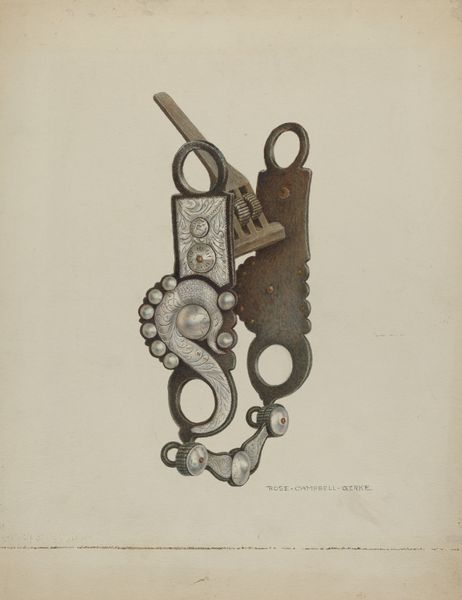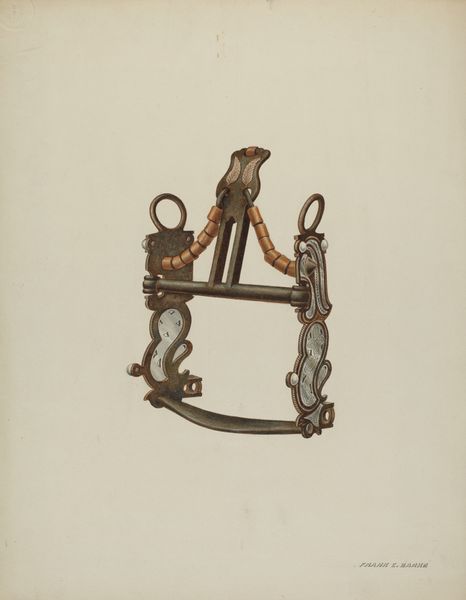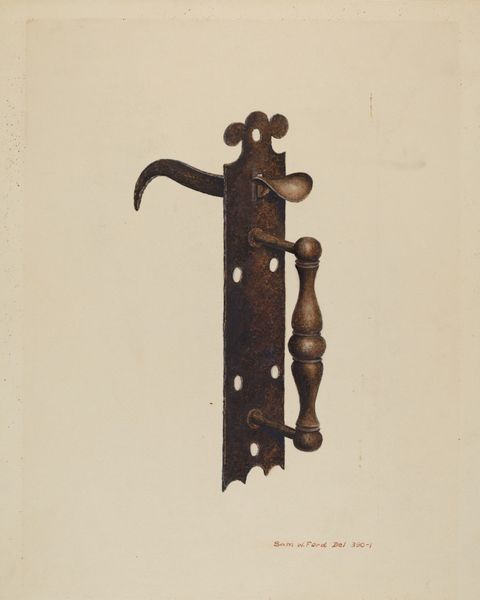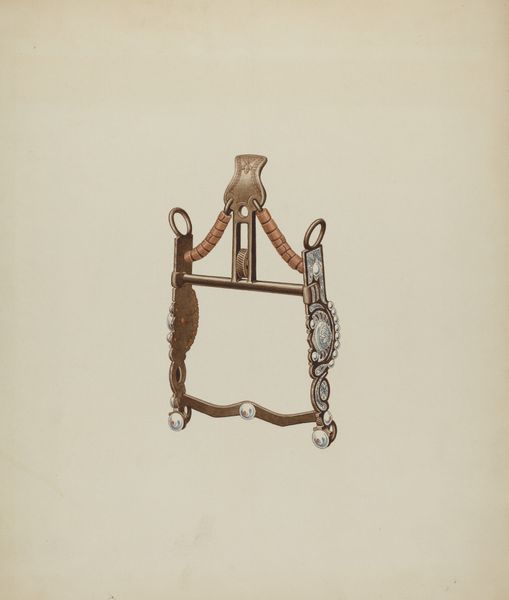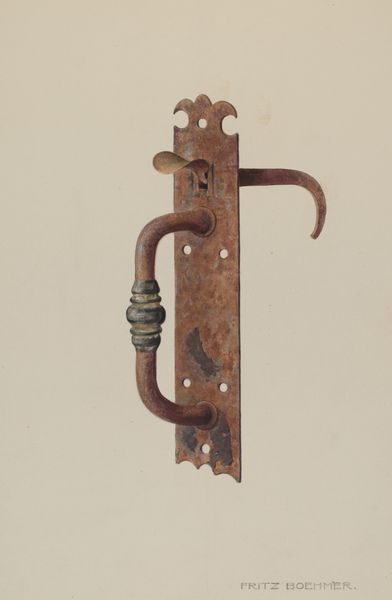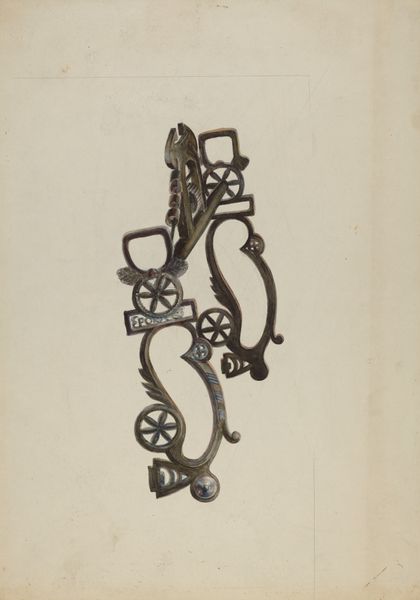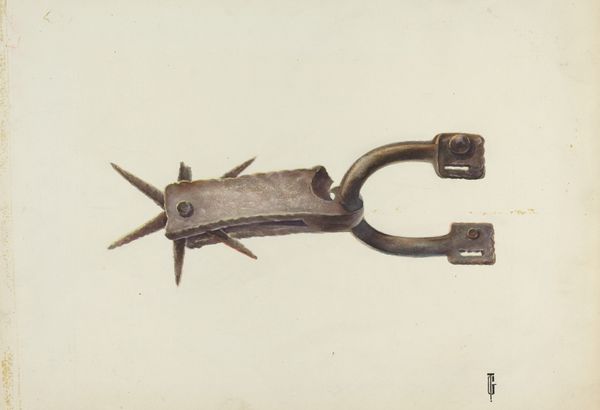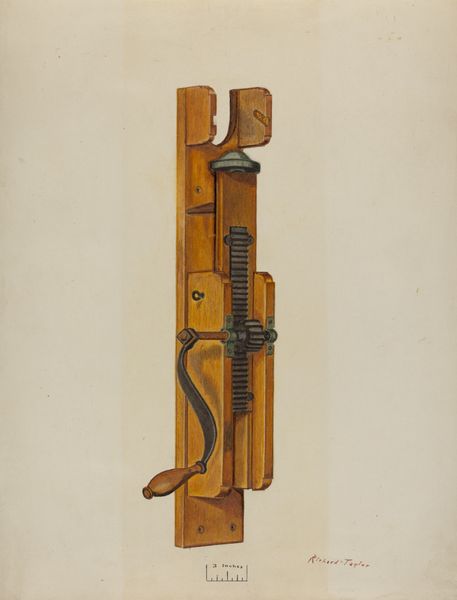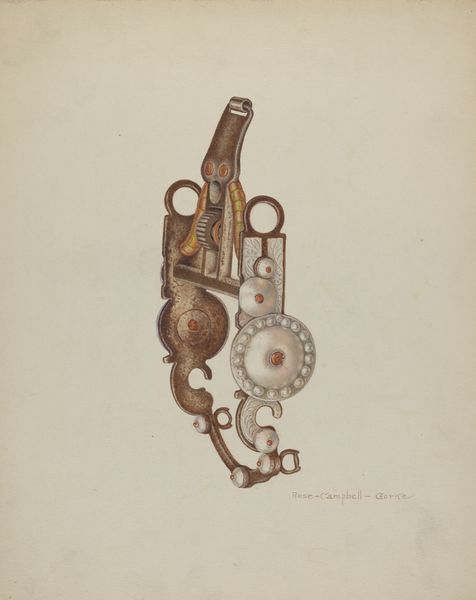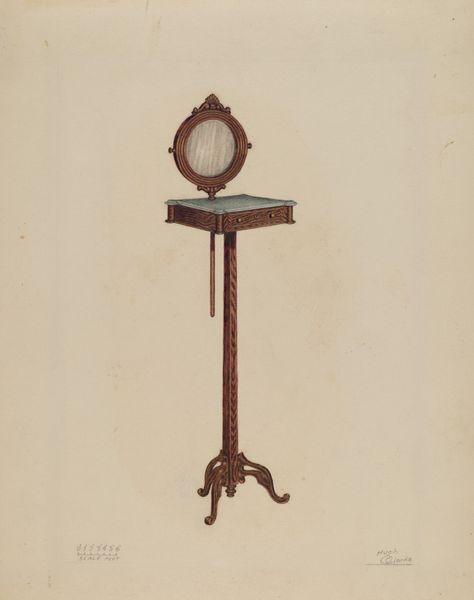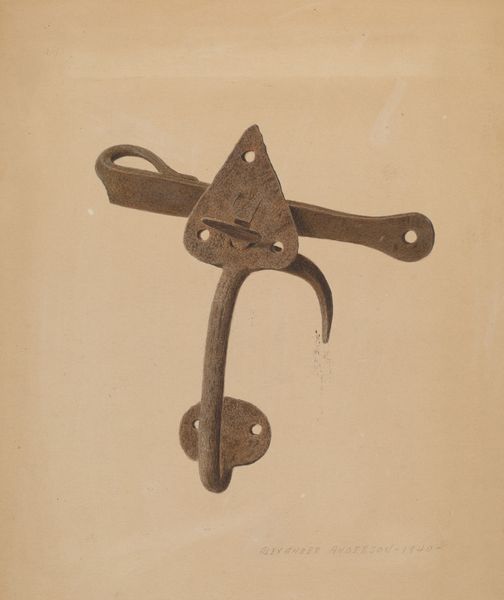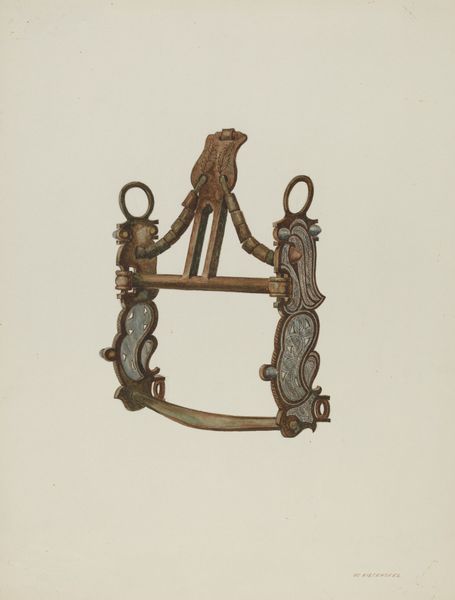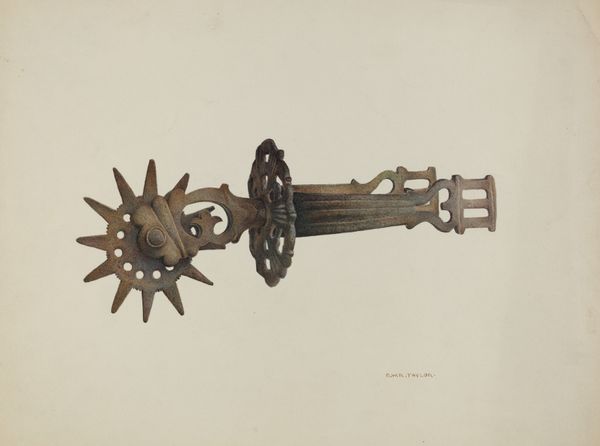
drawing, coloured-pencil, watercolor
#
drawing
#
coloured-pencil
#
watercolor
#
coloured pencil
#
watercolour illustration
#
academic-art
#
watercolor
Dimensions: overall: 27.5 x 35.3 cm (10 13/16 x 13 7/8 in.)
Copyright: National Gallery of Art: CC0 1.0
Curator: Gerald Transpota, around 1937, meticulously rendered in watercolor and colored pencil. Here is the image “Bit”, a drawing which appears to represent precisely that – part of a horse’s bridle. What catches your eye right away? Editor: The immediate feeling is one of ornate constraint, which is odd given the delicate medium. Curator: Constraint, that's insightful. The piece, focusing solely on the bit, emphasizes control and leverage—the stark mechanics of it. The artist uses watercolor and colored pencil to bring out an impressive amount of detail. What do you think this tight focus achieves? Editor: For me it intensifies the scrutiny. The almost diagrammatic isolation forces a reading of its shapes and connections. Semiotically speaking, the absent horse becomes even more palpable—present only through the imposition of these cold shapes of the bridle bit. The composition denies it grace. Curator: It's interesting that you see it that way, as cold. I look at Transpota’s technique here, the layering of colors, and find it somewhat delicate, perhaps even humane. I mean, I understand the mechanism’s use but here I appreciate more what this image communicates about control and refinement. It feels very grounded and earthly. What's the function of art if not to illuminate function, you know? To render the common uncommonly? Editor: Indeed, there’s tension there between form and inherent use that lends a strange dignity. We see how even something used for perhaps an aggressive purpose is elevated through a kind of considered draftsmanship. Looking at the medium used—colored pencil and watercolor—Transpota isn't going for photorealism but a stylized study. Curator: Precisely. It elevates a utilitarian object, transforming it into something worthy of our observation. Transpota draws our gaze to the elegance in functionality, don’t you think? We almost begin to ignore its true intention, its purpose for existence. Editor: Right, that sublimation from the mundane…I think it brings us into a meditation on not just the bit but art and purpose. We're both maybe acknowledging that its value stems less from function and more from the artistry that calls for a re-examination. Curator: So, maybe its real purpose IS only for the artist’s subjective study, to exist only within a human scale, and not bound to external concepts or forces. I can rest easy knowing it simply represents something that exists outside of me, as another tangible being. Editor: Beautifully put. In the end, “Bit” reflects on more than control; it examines art, context, and our connection to even the most functional items in the world around us.
Comments
No comments
Be the first to comment and join the conversation on the ultimate creative platform.
